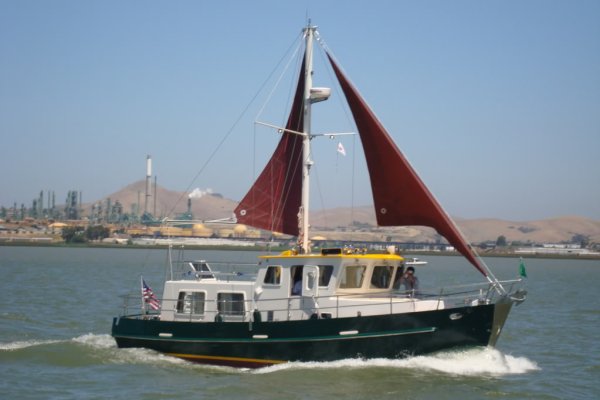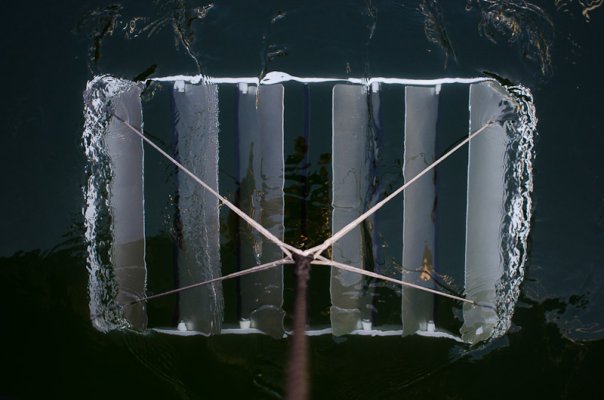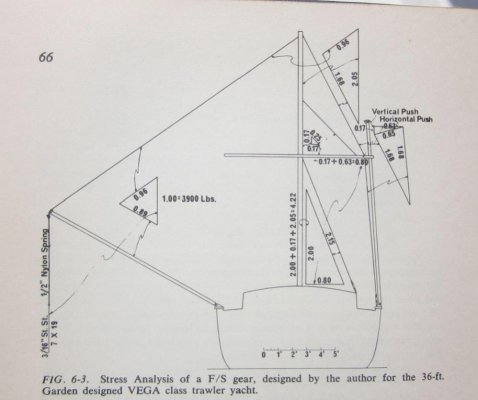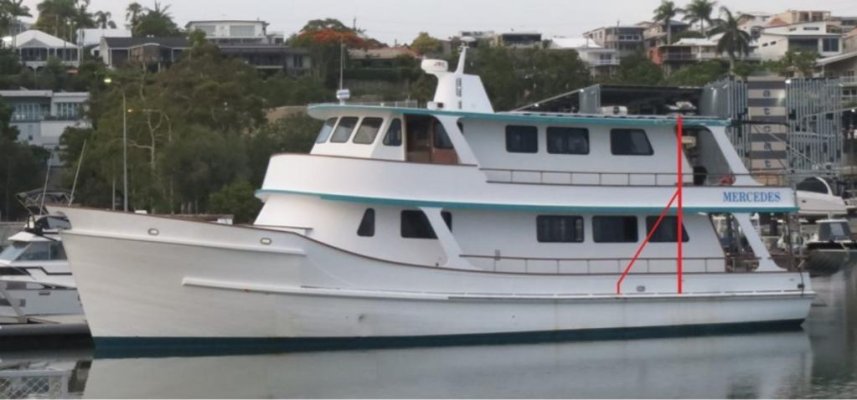We visited a beautiful N40 that ended up having their entire fin system redone after catching the mooring pendant on a fin.
I have to wonder what kind of Cirque du Soleil maneuver managed that bit of customization. I suspect this is the type of stuff people
without fins worry about.....
In the end, there are pluses and minuses to each system.
Hydraulic Fins. Most convenient option for underway stabilization. Except for recent advances in zero-speed stabilization (which requires a significant power source), at-anchor stability is fairly easy to deliver via a relatively inexpensive flopper stopper system. It does require periodic maintenance which is fairly significant - boat must be hauled, fins dropped, and some specialty parts replaced.
Paravanes are simple and effective, but require some work/effort to set, so are best suited for longer runs. Most designs increase air-draft beyond limits of Loop, and they need to be pulled-in when running inlets/bars. Running in the shallow waters of Florida is not always practical. For at-anchor, fitting with an appropriate flat-plate flopper-stopper is easy and an inexpensive addition.
Gyro's are popular with those who have them and are the only system that have no appendages outside the hull and thus do not constrict air draft or drag, and present zero risk of a snag or impact damage. They are not usually a good refit option to an existing boat, but a strong contender for new-build applications for which they are increasingly popular. To operate, they require a constant source of power so generator must be running. Being the new-kid-on-the-block, they seem to have an unfair share of tomatoes being thrown at them by pundits.
Sail. I think a reasonably sized sail-plan (vs a useless steadying sail) is an under-rated option. Based on personal experience, I find steadying sails to be cute but mostly worthless for stability. But I do think a decent sail plan similar to a DD has merit for a cruising trawler. A sail rig with roller furling may very well be the most expensive option of the lot, and will 'set' the boat on a heel vs stabilize it level, and is not effective on some points of sail (indeed, dead downwind the tall mast may exacerbate roll), but it should be considered, especially for single-engine trawlers with no auxiliary power, albeit it's 'get-somewhere' power vs get-home propulsion. At-anchor stability would require some additional rigging, though fairly simple. There are no hull-appendages, though relatively low risk of losing rig overboard and the accompanying damage should not be ignored. It is also the only stability solution that also provides entertainment. Of all the options, Sail requires the most skill and learning curve, but not extreme. It is also the only system that has a sizeable positive impact on fuel efficiency.
So pick your poison. I don't think one system is the best or the worst. Some are more appropriate for certain types of travel or cruising. All have a long history of many satisfied owners who agree on at least one thing: Whatever you chose, stabilization is rarely viewed as optional, at least for cruising purposes outside of protected waters.
Peter




